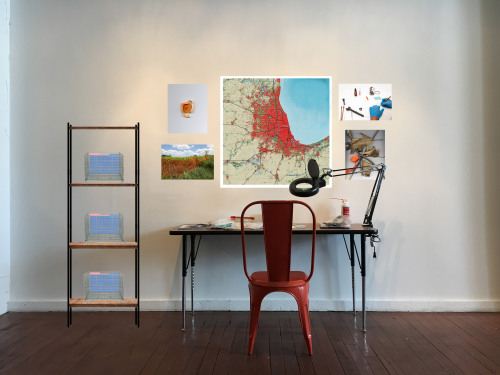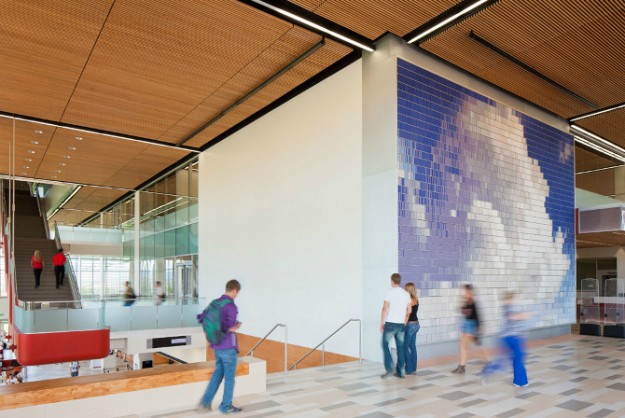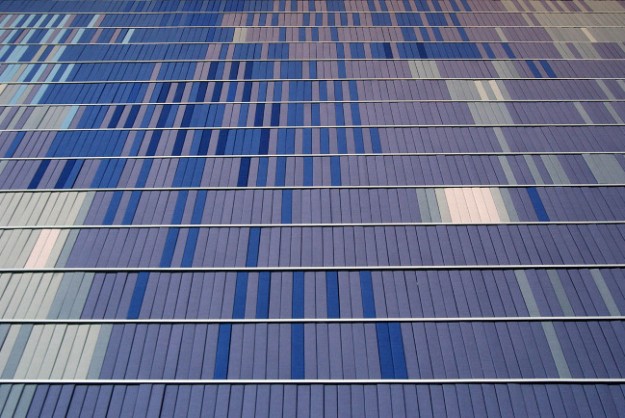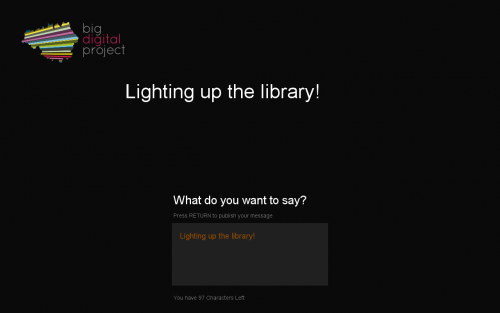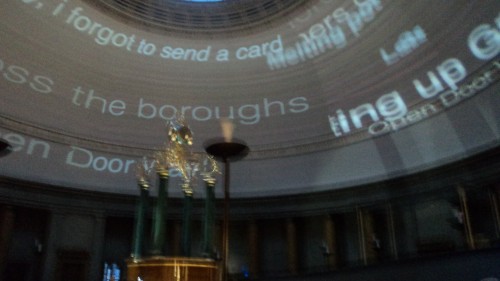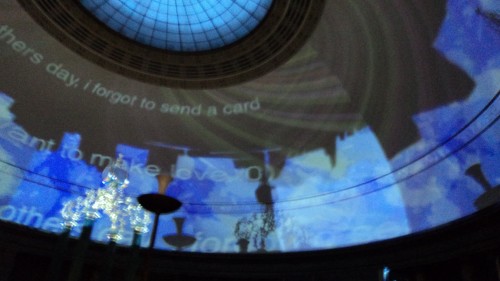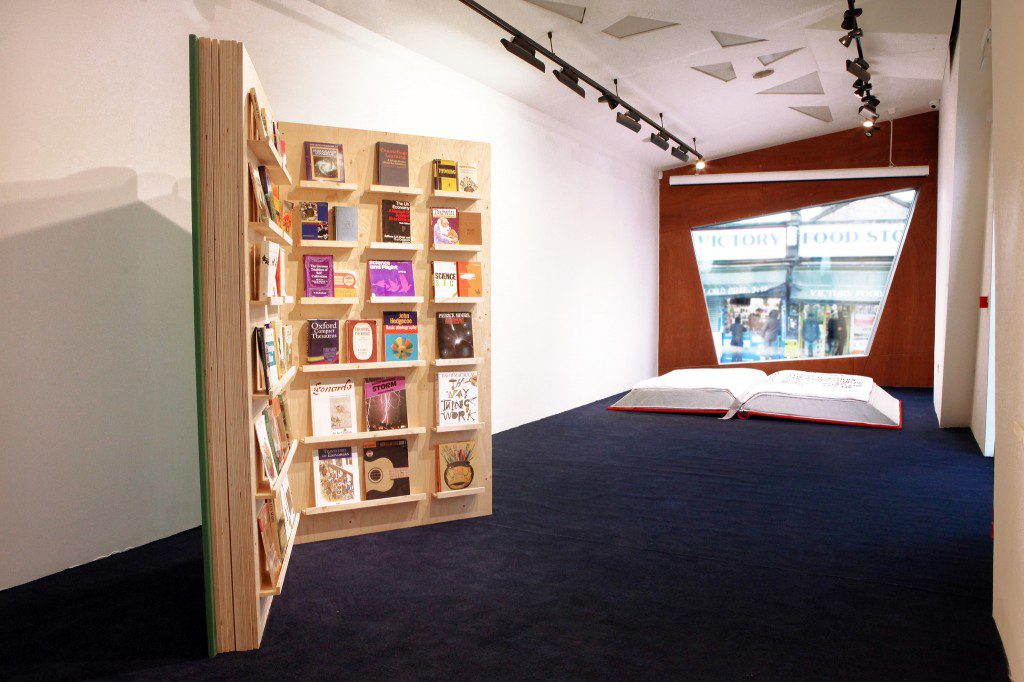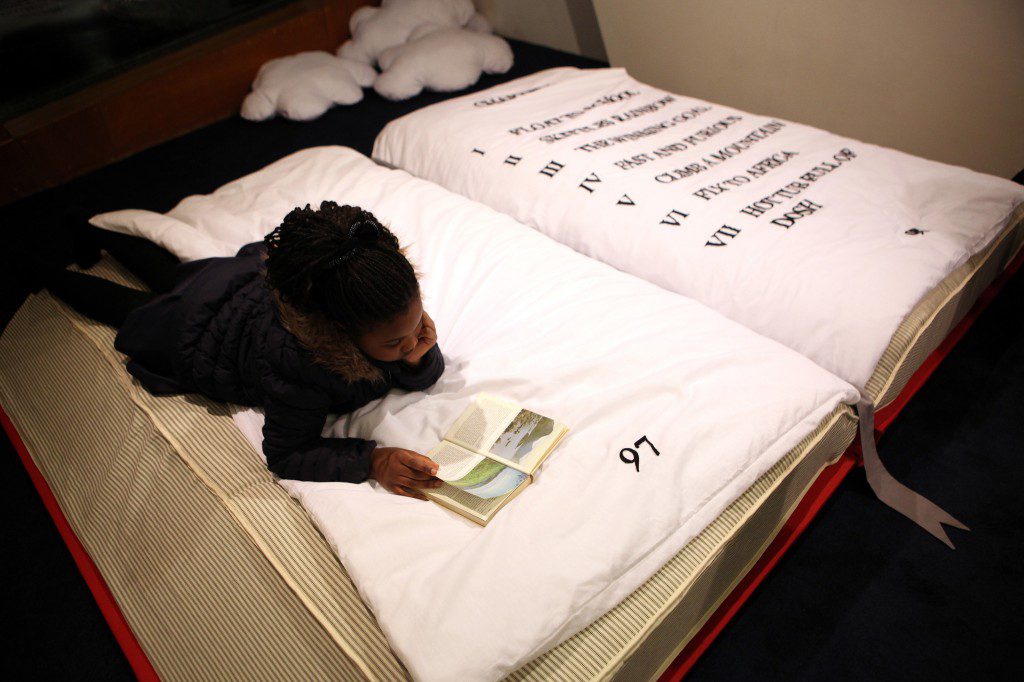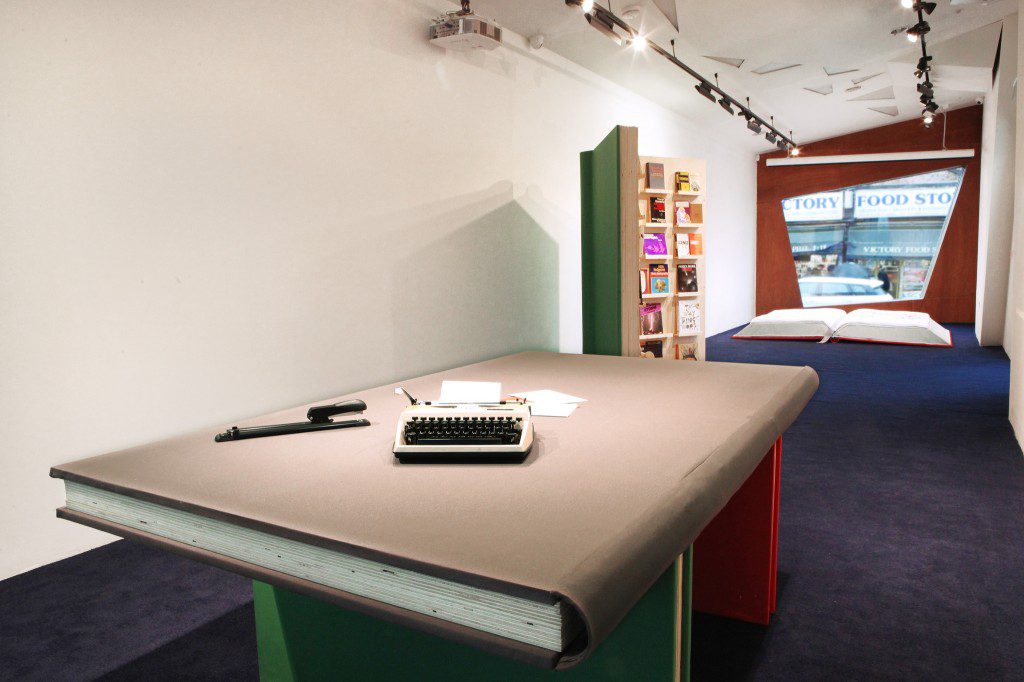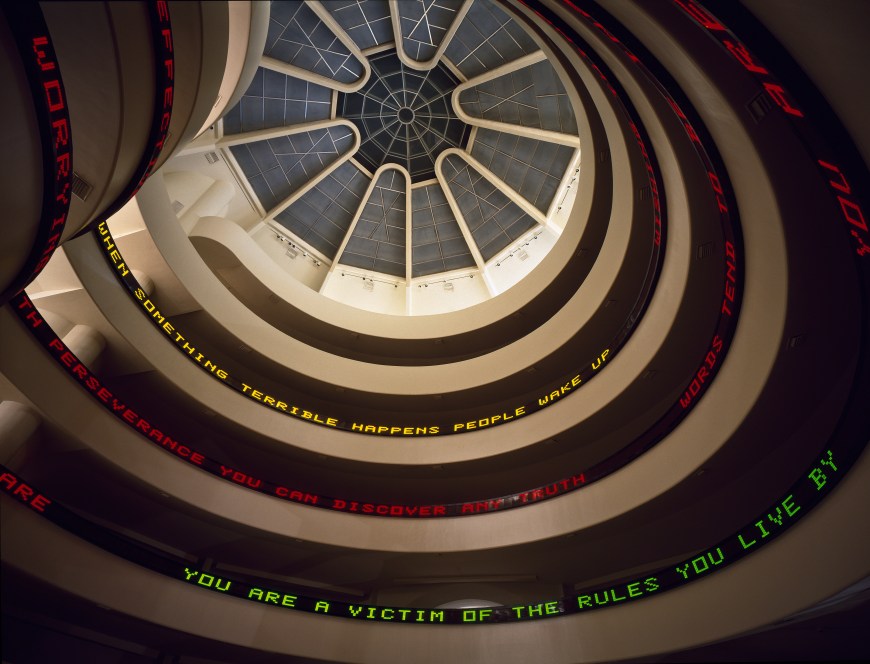Installation Research: mostly situated in libraries
1) Open Land Art & Fact Team: Interactive Installation at DePaul | 2017
(https://environmentalcritique.wordpress.com/2017/03/10/open-land-art-fact-team-interactive-installation-at-depaul/)
This is meant to be an interactive experience where participants are invited to read, inspect, and comment on the items in the shelves. The table has instructions with stickers and comment cards that participants can affix to the back of photographs in the bin and leave with the objects. Artifacts in [sealed] bags are assorted natural objects such as leaves or twigs and assorted refuse such as plastic packaging, [that] have been found in forest or prairie preserves. There are also white sheet printed documents with demographic and ecological information on the locations.
By interacting with this installation/social experiment, faculty and students will contribute to “meaningful public conversation about the relationship between humans and the spaces we occupy”.
2) Interactive Art Installation Encourages Writing In Library Books | 2012
German artist Christian Moeller creates a giant cloud made of 12,000 blank notebooks waiting to be filled. Clouds is a 22 ft. high x 28 ft. wide silver bookshelf that houses 11,840 notebooks, all of which are blank. Students and faculty at the college can borrow the books for their personal use, just like any regular library book. However, unlike a regular library book, the user is encouraged to fill them with whatever they want. Users can draw, write, scrapbook, or in some other way contribute to the content of the book while they have it checked-out. They can then return the book to be restocked, allowing others to take it home and continue adding to it. In this way, Clouds can create an archive of the community over generations.
3) Interactive installation at Central Library | 2014
(http://soisdetraca.com/interactive/interactive-installation-at-central-library/)
People came to express their own thoughts, responding to the question “What do you want to say?” and will be reflected on the screen above. This is much similar to the futuristic SG exhibition we had in Singapore some years ago.
4) Bookbed by Ruth Beale | 2014
(http://ruthbeale.net/exhibition/book-bed/)
An installation of three giant books, Bookbed proposes the book and library as symbols the collective imagination. Complete with mattress and duvet cover pages, the bed features an index of story titles written by young people at Peckham Library.
A book-shelf holds an Autodidact Library, and a writing table hosts the tools for simple book-making as well as space to write responses to a weekly writing challenge.
The whole exhibition was free to book for reading and writing groups, classes and workshops. Programmed events explored learning, imagination and the book-as-symbol alongside current thinking in culture, education and public space.
Set design & build: Lorna Ritchie & David Fryer
5) Untitled (Selections from Truisms, Inflammatory Essays, The Living Series, The Survival Series, Under a Rock, Laments and Child Text) by Jenny Holzer | 1989
(https://www.guggenheim.org/artwork/22064)
In Holzer’s 1989 retrospective installation at the Guggenheim Museum, blinking messages from her various series, programmed to an insistent but silent beat, raced the length of an L.E.D. display board installed along the winding inner wall of Frank Lloyd Wright’s spiral ramp. The museum’s rotunda was transformed into a dazzling electronic arcade. In bringing her art from the street to the museum, Holzer focused on an audience that differed markedly from the unsuspecting passerby. The Guggenheim visitors who stood beneath the revolving ribbons of red, green, and yellow texts were more likely to be aware that this installation brought up such issues as the viability of public art, the commodification and consumption of art, and the conflation of the personal and the political—in short, some of the pressing issues of American art in the 1980s.
Personally, I feel that the cloud installation appeals more to me as there is a physical exchange of art and ideas involved. Perhaps I will look more into this aspect for my library installation project.
